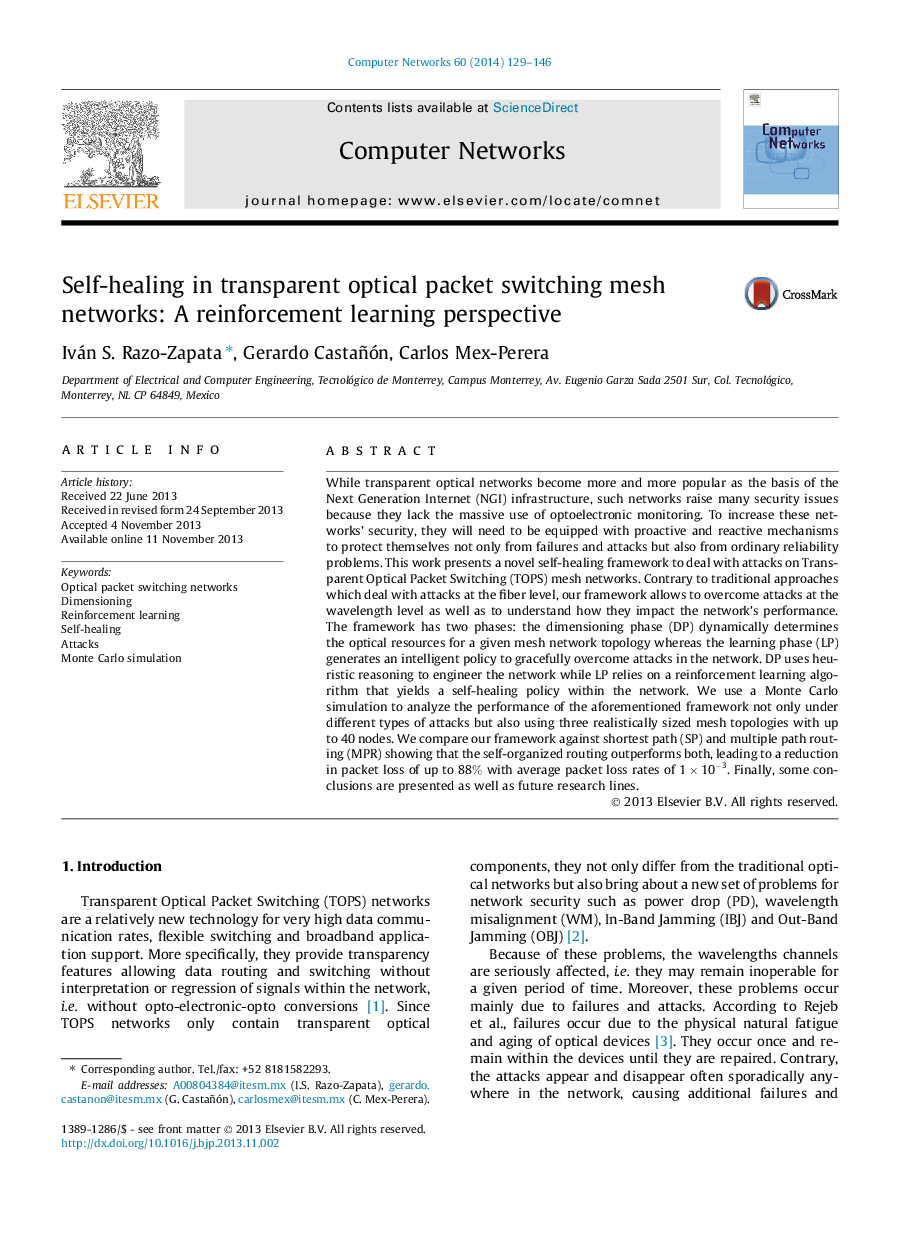| کد مقاله | کد نشریه | سال انتشار | مقاله انگلیسی | نسخه تمام متن |
|---|---|---|---|---|
| 451820 | 694417 | 2014 | 18 صفحه PDF | دانلود رایگان |
While transparent optical networks become more and more popular as the basis of the Next Generation Internet (NGI) infrastructure, such networks raise many security issues because they lack the massive use of optoelectronic monitoring. To increase these networks’ security, they will need to be equipped with proactive and reactive mechanisms to protect themselves not only from failures and attacks but also from ordinary reliability problems. This work presents a novel self-healing framework to deal with attacks on Transparent Optical Packet Switching (TOPS) mesh networks. Contrary to traditional approaches which deal with attacks at the fiber level, our framework allows to overcome attacks at the wavelength level as well as to understand how they impact the network’s performance. The framework has two phases: the dimensioning phase (DP) dynamically determines the optical resources for a given mesh network topology whereas the learning phase (LP) generates an intelligent policy to gracefully overcome attacks in the network. DP uses heuristic reasoning to engineer the network while LP relies on a reinforcement learning algorithm that yields a self-healing policy within the network. We use a Monte Carlo simulation to analyze the performance of the aforementioned framework not only under different types of attacks but also using three realistically sized mesh topologies with up to 40 nodes. We compare our framework against shortest path (SP) and multiple path routing (MPR) showing that the self-organized routing outperforms both, leading to a reduction in packet loss of up to 88%88% with average packet loss rates of 1×10-31×10-3. Finally, some conclusions are presented as well as future research lines.
Journal: Computer Networks - Volume 60, 26 February 2014, Pages 129–146
